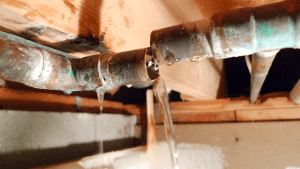Everyone seems to have his or her own conception in relation to Hacks to detect leaks.

Early discovery of dripping water lines can minimize a possible catastrophe. Some little water leakages may not be noticeable.
1. Examine the Water Meter
Every residence has a water meter. Inspecting it is a surefire way that helps you discover leaks. For starters, shut off all the water sources. Guarantee no one will certainly purge, utilize the faucet, shower, run the cleaning device or dishwasher. From there, go to the meter as well as watch if it will certainly transform. Since no person is using it, there must be no motions. If it relocates, that indicates a fast-moving leak. Furthermore, if you discover no changes, wait an hour or more and also examine back once more. This implies you may have a slow-moving leak that might also be underground.
2. Check Water Consumption
If you identify sudden adjustments, in spite of your intake being the exact same, it suggests that you have leaks in your plumbing system. An abrupt spike in your expense indicates a fast-moving leakage.
A steady rise every month, even with the same behaviors, shows you have a slow-moving leak that's likewise gradually intensifying. Call a plumber to completely examine your building, especially if you really feel a cozy location on your floor with piping beneath.
3. Do a Food Coloring Examination
When it comes to water usage, 30% comes from bathrooms. If the shade in some way infiltrates your bowl during that time without flushing, there's a leak between the storage tank and also dish.
4. Asses Outside Lines
Don't neglect to inspect your outside water lines too. Should water permeate out of the connection, you have a loosened rubber gasket. One tiny leakage can lose loads of water as well as surge your water expense.
5. Evaluate the scenario and examine
House owners should make it a practice to examine under the sink counters and even inside cupboards for any kind of bad odor or mold and mildew development. These two red flags suggest a leakage so punctual focus is called for. Doing routine examinations, even bi-annually, can conserve you from a significant problem.
More significantly, if you know your residence is currently old, keep a watchful eye on your heating units, hoses, pipelines etc. Check for stainings and damaging as many pipelines and home appliances have a life expectancy. They will likewise normally weaken because of wear and tear. If you think dripping water lines in your plumbing system, do not wait for it to intensify. Call an expert plumber right away so you don't wind up with a terrible mess in your home.
Early detection of leaking water lines can alleviate a possible disaster. Some tiny water leaks may not be visible. Examining it is a proven way that helps you discover leaks. One tiny leak can lose heaps of water and also increase your water costs.
If you believe dripping water lines in your plumbing system, do not wait for it to rise.
5 Signs that Your Home Has a Hidden Leak
Your water bill is unusually high without explanation
Generally, your water bill tends to stay consistent throughout the year as long as the same number of people live in your household year round. The bill might be higher during certain times of the year, such as summer, when your lawn may require more watering than it does in cooler months. However, if you notice a rise in your water bill that you can’t explain, it’s an indicator that there’s a hidden leak somewhere in your home.
You hear running water
One of the biggest signs that you have a water leak is the sound of rushing water when no plumbing fixtures are on and when no water-using appliances are running. If you hear running water in your walls when no water is being used anywhere in your home, locate your home’s main water shut-off valve, shut off your water supply, and contact a plumber at once.
Your home smells musty
Hidden leaks often occur in dark spaces, such as behind walls or under carpeting. Incidentally, darkness and moisture can create an ideal breeding environment for mold or mildew. If you start to smell mildew or the scent of rotting wood or stagnant water around your home, it’s a fair bet that a leak is the culprit.
You find wet spots around your home
The wet spots usually show up as moist areas in your carpeting. If your home has a basement level, puddles on the floor could indicate a slab leak. Outside, unexplainable puddles or lush, green patches in your yard often mean that there’s a leak in your sewer line or main water line.
You have stains, bubbles, or condensation on your walls/ceiling
Stains or condensation on your walls or ceiling are both major signs of a hidden leak. Also, drywall (AKA. sheetrock) is very absorbent, and as it takes on more water from a leak behind a wall, it will start to bubble, swell, or warp. If you see this happening in your home, don’t wait to contact a plumber before the water damage spreads.
https://www.ezflowplumbingaz.com/blog/2019/june/5-signs-that-your-home-has-a-hidden-leak/

Hopefully you liked our section on Hacks to detect leaks. Thanks so much for taking the time to browse our piece of content. Appreciated our piece of writing? Please share it. Let other people check it out. Kudos for your time. Don't forget to check our blog back soon.